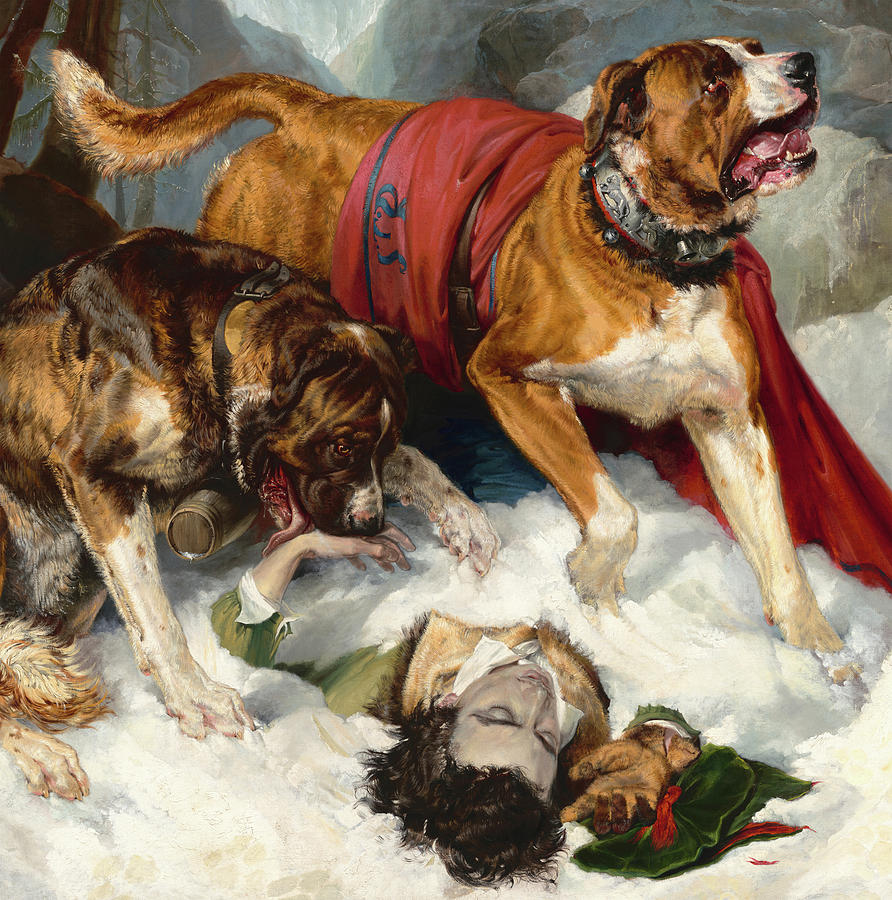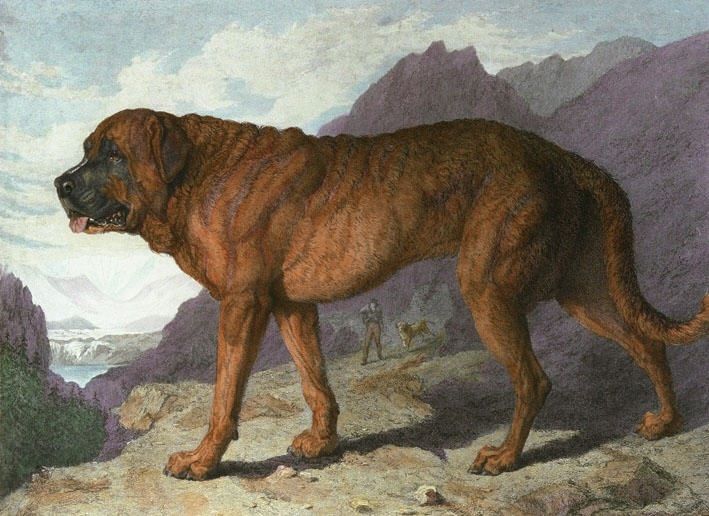
At one time, he was believed to be the largest dog in England.
But first, some background.
Centuries after the Romans had left behind some of their gigantic Mollossian war dogs in what is England today, enough of the Molossers had managed to survive and meandered southeast. They ended up in the Alpine valleys.
Around the 10th century, monks living in the valleys adopted some of the dogs to protect their monasteries. Over time, the dogs came to be regarded as natives of the Swiss Alps, and among the names used to refer to them was the Alpine Mastiff.
In 1829, the first Alpine Mastiff was brought to England, a brindle dog named “L’Ami.” The magnificent dog was exhibited throughout Liverpool and London and touted as the largest dog in the world. The most famous Alpine Mastiff, however, was “Lion,” a dog who had been acquired from the St. Bernard hospice 15 years earlier by a Swiss chap who gifted it to a Mrs. L.W. Boode. “Lion” was reportedly 76 inches long and 31 inches high at the middle of his back:

Engraved by Thomas Landseer after a painting of “Lion” by a 13 year old Edwin Landseer/Public domain
A year after “Lion” had arrived in 1815, a 13 year old artist, Edwin Landseer, painted Lion’s portrait which was exhibited at Spring Gardens in 1817. In 1820, Landseer painted another oil entitled, “Alpine Mastiffs Reanimating a Distressed Traveller,” which featured Lion wearing a red blanket with the initials “St. B” (St. Bernard) and his son Caesar. That’s the image you see at the top.
The artistic renderings certainly spread the word of the Alpine Mastiff, but you won’t find an Alpine Mastiff anywhere on the planet today because they are extinct. Despite the splash made by the breed at the time, there was little effort to preserve the purity of the Alpine Mastiff in the 1800s, and the breed vanished. Some say that too much crossbreeding to develop new breeds of mountain dog caused the demise of the breed, but in the book, In Dogs. Their Origin and Varieties (1874), author H.D. Richardson wrote that except for one dog, all the Alpine Mastiffs at the hospice in St. Bernard, had succumbed to disease. The monks had no choice but to breed the lone surviving dog with other great breeds. Other sources indicate that because winters at the Great Saint Bernard Pass were especially severe between 1816 and 1818, many dogs perished, and the monks, according to rumor, crossed remaining dogs were crossed with Great Danes or English Mastiffs, but no records exist to confirm this.
Whatever the cause of the Alpine Mastiff’s demise, its DNA lives on in the Saint Bernard which has the Alpine Mastiff as a genetic ancestor. Indeed, we’ve read that the names, Alpine Mastiff and St. Bernard, were used interchangeably by the beginning of the 19th century. In this book, Dogs, author Desmond Morris, writes that as late as 1835, a dog presented to the London Zoo as part of an effort to showcase exotic and large animals to the public was listed as being an Alpine Mastiff.
Top image: Alpine Mastiffs Reanimating a Distressed Traveler, 1820 by Sir Edwin Landseer
